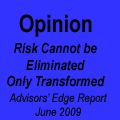TXPR closed at 617.51, down 0.78% on the day. Volume today was 1.47-million, above the median of the past 21 trading days.
CPD closed at 12.30, down 0.65% on the day. Volume was 46,120, near the median of the past 21 trading days.
ZPR closed at 10.515, down 0.52% on the day. Volume was 72,940, fourth-lowest of the past 21 trading days.
Five-year Canada yields were up to 3.02%.
| HIMIPref™ Preferred Indices These values reflect the December 2008 revision of the HIMIPref™ Indices Values are provisional and are finalized monthly |
|||||||
| Index | Mean Current Yield (at bid) |
Median YTW |
Median Average Trading Value |
Median Mod Dur (YTW) |
Issues | Day’s Perf. | Index Value |
| Ratchet | 0.00 % | 0.00 % | 0 | 0.00 | 0 | 0.2983 % | 2,152.0 |
| FixedFloater | 0.00 % | 0.00 % | 0 | 0.00 | 0 | 0.2983 % | 4,127.6 |
| Floater | 9.59 % | 10.18 % | 36,713 | 9.39 | 4 | 0.2983 % | 2,378.7 |
| OpRet | 0.00 % | 0.00 % | 0 | 0.00 | 0 | -0.1250 % | 3,601.4 |
| SplitShare | 4.79 % | 5.32 % | 43,169 | 1.29 | 8 | -0.1250 % | 4,300.9 |
| Interest-Bearing | 0.00 % | 0.00 % | 0 | 0.00 | 0 | -0.1250 % | 3,355.7 |
| Perpetual-Premium | 0.00 % | 0.00 % | 0 | 0.00 | 0 | -0.1485 % | 2,910.5 |
| Perpetual-Discount | 5.91 % | 6.00 % | 50,544 | 13.91 | 31 | -0.1485 % | 3,173.8 |
| FixedReset Disc | 5.53 % | 6.93 % | 123,313 | 12.50 | 58 | -0.2475 % | 2,660.5 |
| Insurance Straight | 5.79 % | 5.92 % | 64,058 | 14.02 | 20 | -0.5707 % | 3,124.7 |
| FloatingReset | 7.61 % | 7.71 % | 27,018 | 11.67 | 1 | 0.6261 % | 2,849.1 |
| FixedReset Prem | 6.44 % | 5.67 % | 206,081 | 13.57 | 7 | -0.0668 % | 2,570.1 |
| FixedReset Bank Non | 0.00 % | 0.00 % | 0 | 0.00 | 0 | -0.2475 % | 2,719.6 |
| FixedReset Ins Non | 5.22 % | 6.17 % | 93,474 | 13.69 | 14 | -0.5249 % | 2,817.1 |
| Performance Highlights | |||
| Issue | Index | Change | Notes |
| CCS.PR.C | Insurance Straight | -5.91 % | YTW SCENARIO Maturity Type : Limit Maturity Maturity Date : 2054-10-21 Maturity Price : 20.70 Evaluated at bid price : 20.70 Bid-YTW : 6.11 % |
| TD.PF.E | FixedReset Disc | -4.66 % | YTW SCENARIO Maturity Type : Limit Maturity Maturity Date : 2054-10-21 Maturity Price : 22.42 Evaluated at bid price : 22.91 Bid-YTW : 6.20 % |
| ENB.PR.N | FixedReset Disc | -4.37 % | YTW SCENARIO Maturity Type : Limit Maturity Maturity Date : 2054-10-21 Maturity Price : 21.00 Evaluated at bid price : 21.00 Bid-YTW : 7.23 % |
| BIP.PR.A | FixedReset Disc | -2.79 % | YTW SCENARIO Maturity Type : Limit Maturity Maturity Date : 2054-10-21 Maturity Price : 20.90 Evaluated at bid price : 20.90 Bid-YTW : 7.76 % |
| IFC.PR.A | FixedReset Ins Non | -2.59 % | YTW SCENARIO Maturity Type : Limit Maturity Maturity Date : 2054-10-21 Maturity Price : 18.41 Evaluated at bid price : 18.41 Bid-YTW : 6.52 % |
| CU.PR.J | Perpetual-Discount | -2.49 % | YTW SCENARIO Maturity Type : Limit Maturity Maturity Date : 2054-10-21 Maturity Price : 19.60 Evaluated at bid price : 19.60 Bid-YTW : 6.17 % |
| BN.PF.B | FixedReset Disc | -2.45 % | YTW SCENARIO Maturity Type : Limit Maturity Maturity Date : 2054-10-21 Maturity Price : 20.70 Evaluated at bid price : 20.70 Bid-YTW : 7.08 % |
| IFC.PR.C | FixedReset Ins Non | -1.87 % | YTW SCENARIO Maturity Type : Limit Maturity Maturity Date : 2054-10-21 Maturity Price : 20.45 Evaluated at bid price : 20.45 Bid-YTW : 6.61 % |
| SLF.PR.G | FixedReset Ins Non | -1.65 % | YTW SCENARIO Maturity Type : Limit Maturity Maturity Date : 2054-10-21 Maturity Price : 16.08 Evaluated at bid price : 16.08 Bid-YTW : 6.70 % |
| PWF.PR.P | FixedReset Disc | -1.59 % | YTW SCENARIO Maturity Type : Limit Maturity Maturity Date : 2054-10-21 Maturity Price : 14.81 Evaluated at bid price : 14.81 Bid-YTW : 7.37 % |
| PWF.PR.T | FixedReset Disc | -1.57 % | YTW SCENARIO Maturity Type : Limit Maturity Maturity Date : 2054-10-21 Maturity Price : 21.67 Evaluated at bid price : 22.00 Bid-YTW : 6.18 % |
| GWO.PR.Y | Insurance Straight | -1.44 % | YTW SCENARIO Maturity Type : Limit Maturity Maturity Date : 2054-10-21 Maturity Price : 19.22 Evaluated at bid price : 19.22 Bid-YTW : 5.92 % |
| CU.PR.C | FixedReset Disc | -1.35 % | YTW SCENARIO Maturity Type : Limit Maturity Maturity Date : 2054-10-21 Maturity Price : 20.50 Evaluated at bid price : 20.50 Bid-YTW : 6.65 % |
| BN.PF.I | FixedReset Disc | -1.32 % | YTW SCENARIO Maturity Type : Limit Maturity Maturity Date : 2054-10-21 Maturity Price : 22.07 Evaluated at bid price : 22.35 Bid-YTW : 7.44 % |
| ENB.PR.F | FixedReset Disc | -1.29 % | YTW SCENARIO Maturity Type : Limit Maturity Maturity Date : 2054-10-21 Maturity Price : 18.42 Evaluated at bid price : 18.42 Bid-YTW : 7.64 % |
| GWO.PR.I | Insurance Straight | -1.27 % | YTW SCENARIO Maturity Type : Limit Maturity Maturity Date : 2054-10-21 Maturity Price : 19.45 Evaluated at bid price : 19.45 Bid-YTW : 5.85 % |
| MFC.PR.B | Insurance Straight | -1.22 % | YTW SCENARIO Maturity Type : Limit Maturity Maturity Date : 2054-10-21 Maturity Price : 20.25 Evaluated at bid price : 20.25 Bid-YTW : 5.82 % |
| POW.PR.D | Perpetual-Discount | -1.04 % | YTW SCENARIO Maturity Type : Limit Maturity Maturity Date : 2054-10-21 Maturity Price : 21.02 Evaluated at bid price : 21.02 Bid-YTW : 6.00 % |
| CU.PR.D | Perpetual-Discount | 1.02 % | YTW SCENARIO Maturity Type : Limit Maturity Maturity Date : 2054-10-21 Maturity Price : 20.75 Evaluated at bid price : 20.75 Bid-YTW : 6.01 % |
| FTS.PR.K | FixedReset Disc | 1.25 % | YTW SCENARIO Maturity Type : Limit Maturity Maturity Date : 2054-10-21 Maturity Price : 21.00 Evaluated at bid price : 21.00 Bid-YTW : 6.26 % |
| GWO.PR.Q | Insurance Straight | 1.30 % | YTW SCENARIO Maturity Type : Limit Maturity Maturity Date : 2054-10-21 Maturity Price : 21.65 Evaluated at bid price : 21.90 Bid-YTW : 5.93 % |
| ENB.PF.A | FixedReset Disc | 1.81 % | YTW SCENARIO Maturity Type : Limit Maturity Maturity Date : 2054-10-21 Maturity Price : 19.10 Evaluated at bid price : 19.10 Bid-YTW : 7.51 % |
| ENB.PF.G | FixedReset Disc | 2.30 % | YTW SCENARIO Maturity Type : Limit Maturity Maturity Date : 2054-10-21 Maturity Price : 17.78 Evaluated at bid price : 17.78 Bid-YTW : 7.83 % |
| NA.PR.S | FixedReset Disc | 8.32 % | YTW SCENARIO Maturity Type : Limit Maturity Maturity Date : 2054-10-21 Maturity Price : 23.11 Evaluated at bid price : 24.75 Bid-YTW : 5.59 % |
| Volume Highlights | |||
| Issue | Index | Shares Traded |
Notes |
| IFC.PR.F | Insurance Straight | 152,000 | YTW SCENARIO Maturity Type : Limit Maturity Maturity Date : 2054-10-21 Maturity Price : 22.53 Evaluated at bid price : 22.81 Bid-YTW : 5.86 % |
| TD.PF.D | FixedReset Disc | 118,000 | YTW SCENARIO Maturity Type : Limit Maturity Maturity Date : 2054-10-21 Maturity Price : 23.32 Evaluated at bid price : 23.95 Bid-YTW : 5.89 % |
| SLF.PR.C | Insurance Straight | 34,000 | YTW SCENARIO Maturity Type : Limit Maturity Maturity Date : 2054-10-21 Maturity Price : 20.65 Evaluated at bid price : 20.65 Bid-YTW : 5.45 % |
| CM.PR.S | FixedReset Disc | 27,400 | YTW SCENARIO Maturity Type : Limit Maturity Maturity Date : 2054-10-21 Maturity Price : 24.89 Evaluated at bid price : 24.89 Bid-YTW : 5.58 % |
| TD.PF.C | FixedReset Disc | 26,600 | YTW SCENARIO Maturity Type : Limit Maturity Maturity Date : 2054-10-21 Maturity Price : 22.03 Evaluated at bid price : 22.60 Bid-YTW : 5.77 % |
| BN.PR.B | Floater | 24,000 | YTW SCENARIO Maturity Type : Limit Maturity Maturity Date : 2054-10-21 Maturity Price : 11.25 Evaluated at bid price : 11.25 Bid-YTW : 10.22 % |
| There were 19 other index-included issues trading in excess of 10,000 shares. | |||
| Wide Spread Highlights | ||
| Issue | Index | Quote Data and Yield Notes |
| CCS.PR.C | Insurance Straight | Quote: 20.70 – 22.70 Spot Rate : 2.0000 Average : 1.4147 YTW SCENARIO |
| ENB.PR.N | FixedReset Disc | Quote: 21.00 – 22.10 Spot Rate : 1.1000 Average : 0.6243 YTW SCENARIO |
| TD.PF.E | FixedReset Disc | Quote: 22.91 – 24.00 Spot Rate : 1.0900 Average : 0.7331 YTW SCENARIO |
| IFC.PR.A | FixedReset Ins Non | Quote: 18.41 – 19.50 Spot Rate : 1.0900 Average : 0.7987 YTW SCENARIO |
| CU.PR.J | Perpetual-Discount | Quote: 19.60 – 20.36 Spot Rate : 0.7600 Average : 0.4865 YTW SCENARIO |
| BIP.PR.A | FixedReset Disc | Quote: 20.90 – 21.90 Spot Rate : 1.0000 Average : 0.7486 YTW SCENARIO |












































































































TD Credit Trend Negative: DBRS
October 16th, 2024DBRS has announced:
Affected issues are TD.PF.A, TD.PF.C, TD.PF.D, TD.PF.E, TD.PF.I and TD.PF.J.
Posted in Issue Comments | No Comments »